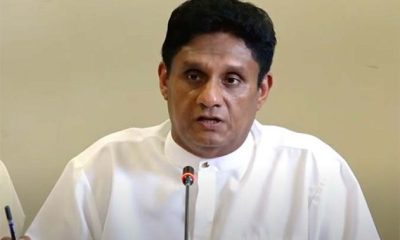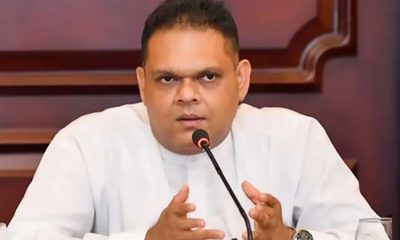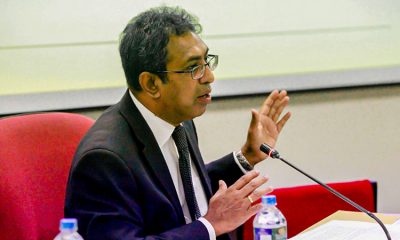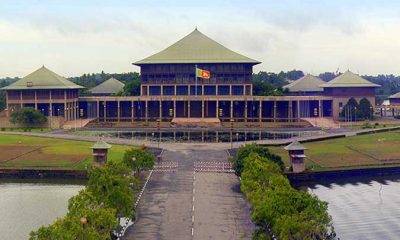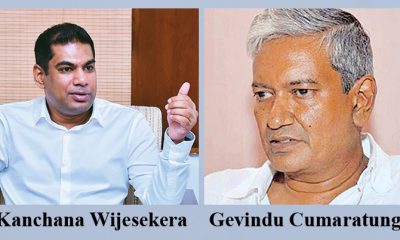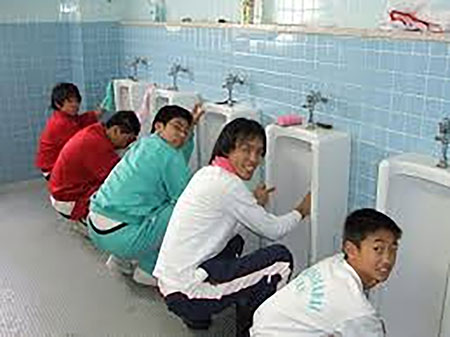Features
Sir John takes over, cabinet meeting at N’Eliya and the EL Senanayake election case

(Excerpted from Memoirs of a Cabinet Secretary by BP Peiris)
The first meeting of the new Cabinet placed on record its appreciation of the services rendered to the country by Mr Dudley Senanayake. Sir Kanthiah Vaithianathan, who had resigned his post as Permanent Secretary to the Ministry of Defence and External Affairs, took over the Portfolio of Housing and Social Services.
Sir John was spending a few days in December 1953 at his official residence, The Lodge, Nuwara Eliya. More out of mischief than on grounds of urgency, he summoned the Cabinet to meet at The Lodge on December 31. On the New Year Day following, A. G. Ranasinha, the Secretary, was to receive the honour of knighthood, and I, the O.B.E., and we found the arrangement very inconvenient, but had to obey orders and attend the meeting.
We accordingly travelled to Nanu Oya by the night train on the 30th with office peons and Cabinet security boxes. On reaching our destination early next morning at about six, we found Police cars waiting for us on Sir John’s instructions. On our reaching The Lodge, the cook, Periasamy, was there to greet us, again on Sir John’s orders, with egg hoppers and fish curry, which was most welcome. Sir John was asleep but had given his orders with military precision.
We soon got ready and the meeting started rather early at about 9 a.m. At 11 a.m. drinks were served. Every possible brand of liquor was laid out on a side table, and we were asked to help ourselves. At 1 p.m. there was a short adjournment for lunch, preceded by a few more drinks. An excellent lunch, of mulligatawny, yellow rice and chicken curry was provided by the cook. The meeting terminated early afternoon and we had to while away the time till 5 p.m., when Lord Soulbury had invited us to tea.
Some Ministers preferred to walk on the well-trimmed lawns. Sir John, Bulankulame Dissawa, M. D. Banda, and I were in the sitting room, warming ourselves by the fire when Sir John asked me, “I say, Peiris, aren’t you getting something tomorrow?” The recommendation for the honour is made by the Prime Minister, but the letter inquiring whether I would accept the honour comes from Queen’s House marked ‘Top Secret’.
I therefore replied “I know nothing about it, Sir”, and Sir John told the other Ministers “Look at this chap; I recommend him for the honour and he thinks it is a Cabinet secret and wants to hide it from me. Anyway, I’ll be at your house at 7 p.m. Don’t give lime juice.”
We took the night train back, travelling to Nanu Oya again in Police cars. It was a bit of a rush because the Mayor, Mr Vijayaratnasingham, had a cocktail party in our honour and Ranasinha and I were worried that we would miss our train. Sir John had seen to it that baskets of flowers were put into our cars. True to his word, the Pilot car preceding the Prime Minister’s car turned in at my gate sharp at seven the next evening. He had two whiskeys and was off to be in time at the next place because mine was not the only house of ‘honours’ men he visited that evening.
He was surprised when I asked him in French whether to sing him a French song. He said “Oui, oui, oui” and asked who was going to play. I sat at the piano and, with Sir John standing by me with his glass in his hand, sang a naughty song which Maurice Chevalier used to sing at the Moulin Rouge in Paris in the early thirties, and the words of which no one but Sir John understood. When I was getting to the end of the chorus, he whispered in my ear “Sing the chorus again.” The first line of the chorus was “Dites moi, ma mere, dites moi ma mere pourquoi less chiens daps les rues se months dessous”.
One of the first major questions which the Prime Minister asked his Cabinet to consider was that of bribery and corruption. He was determined, if possible, to stamp this moral stain out of public life. A new law was drafted to be in operation in the first instance for 18 months and to be applicable to public servants only. Charges were to be investigated by the Criminal Investigation Department and the tribunal hearing the charges was to consist of judges or retired judges.
Power was also taken to make the new law applicable, if necessary, to the findings of a Commission appointed to investigate allegations of bribery and corruption against a Senator or Member of Parliament, and it was agreed that any fee or reward paid or given to a Senator or Member of Parliament to appear for any person before a public officer other than a judicial or quasi-judicial officer should be deemed to be a bribe. The Bill was passed into law as Act No. II of 1954, and has been amended more than once to vest additional powers in the Bribery Commissioner.
E. B. Wikramanayake, Q. C. now joined the Cabinet as Minister of Justice. He was a man of few words and did not believe in wasting his time or anyone else’s. In the course of a discussion, he made his point in the fewest possible words.
In December 1953, the Governor-General was informed that Her Majesty the Queen intended to visit Ceylon. The Cabinet considered this communication and agreed that Her Majesty should be invited to open the next Session of Parliament. The Queens’ Speech, which I was asked to make as short as possible, was approved by the Cabinet and an advance copy sent to the Palace.
On the day of Her Majesty’s arrival in Colombo, I found five lines of traffic opposite my house on the Havelock Road moving, from two in the morning, towards the city. The streets were decorated and thronged with people, rich and poor, to welcome the Royal visitors. The weather was more than kind; it was a scorching sun, and the Queen, who rode with His Royal Highness Prince )Philip in an open car had a parasol for protection.
I watched the procession from a vantage point in the Dutch Burgher Union in Bullers Road. Persons were perched on the roofs of the houses opposite. ‘The welcome accorded to the Royal couple was rousing as well as spontaneous. The impression that I had was first, that the welcome was a natural gesture of loyalty, and secondly, that, with our own monarchical background, our people just cannot resist Royalty and the pageantry that is associated with that institution.
I wonder how many persons noticed the Constitutional aspect of the Royal visit. Her Majesty was Queen of Ceylon, and, though not domiciled here, she was temporarily resident in one of Her Dominions. As such, during Her residence here, the person she had appointed to represent Her in the Island, Lord Soulbury, officially ceased to exist. The Governor-General could not have assented to a Bill nor could he have exercised the Royal prerogative of pardon. The office of the Governor-General was, for the time being, in abeyance. That is the reason for Lord Soulbury’s absence at the Opening of Parliament. In effect, he “took himself away” and stayed in the background.
Her Majesty opened the Third Session of the Second Parliament on April 12, 1954, and read Her Speech in English in a clear voice. Naturally, she could not be asked to comply, as Sir Oliver Goonetilleke did a few years later, with the requirements of our Official Language Act. At the next Cabinet meeting Ministers Vaithianathan and Natesan referred to the fact that, at the presentation of the Addresses, the speeches had been made in English and Sinhala but not in Tamil. They stated that this had caused uneasiness among the Tamil community.
I think the two Tamil Ministers, when they used the word “uneasiness”, exercised the utmost restraint in the use of language and refrained, with great dignity, in giving vent, not only to their own feelings, but to the feelings of the entire Tamil community. To make matters worse, the Prime Minister assured the Cabinet that the omission of a Speech in Tamil was accidental and not intentional, and promised to make a public statement to that effect. Really, I ask, to whom was the Prime Minister talking? To two of the intellectual Ministers in his Cabinet; and was he talking with his tongue in his cheek? Incidents like this though quickly forgotten by the Sinhalese, remain long in the memories of the minority communities as utterly insulting and unnecessary pinpricks inflicted on purpose.
On Her birthday, April 21, Her Majesty held an Investiture at Queen’s House at which A. G. Ranasinha was knighted and I was invested with the insignia of the O.B.E. A Throne had been placed on the dais for the Queen but had to be hurriedly removed a few minutes before Her Majesty’s arrival because, in England, it is customary for the Sovereign to stand throughout an Investiture. His Royal Highness stood one foot behind the Queen throughout the ceremony and looked thoroughly bored.
Immediately after the Investiture, a group photograph was taken of Her Majesty and Her Ceylon Cabinet. The seats were all arranged. The Prime Minister would naturally sit on the Queen’s right. Sir Oliver Goonetilleke wanted to sit on Her Majesty’s left but Minister J. R. Jayewardene insisted that the setting should be according to the Order of Precedence and that he should be on the Queen’s left. By his sojourn abroad, Sir Oliver had come down in the Precedence Table and, in that historic photograph, would have had to stand in the second row if one of the Ministers had not fallen ill and his place taken by an acting Minister.
It is for this reason that Sir Oliver is seen seated, not next to the Queen, but in the last chair. Was it not Pope who said that every man has just as much vanity as he wants understanding? When this squabble about seating had been settled, the Aide-de-Camp was informed that the Ministers were ready. Her Majesty arrived and took her seat. She was so dignified that the photographer did not dare to tell Her to smile or put her left foot forward; but a beautiful photograph was the result. At the end of the ceremony, Sir John, on behalf of the Cabinet, presented Her Majesty with a silver tray as a birthday present.
It was at about this time that my daughter Kamala, to the family and friends known as ‘Binkie’, married the man of her choice, Dr Cecil D. Chelliah, a specialist in the diseases of the chest. As I said before, her Kundasale training had turned out a plain living, high thinking, sensible and efficient woman. D. S. Senanayake was right in his forecast about the girls turned out at Kundasale. The doctor had music in him, and it was music that brought the couple together. In view of this strong community of interests, which was a firmer basis for sound marriage than good looks, a sports car or a tweed suit, my wife and I readily gave our consent.
He was a Tamil and a Christian; but I had no difficulty in coming to a decision as my education had been completely free of any racial or religious bias and hypocrisy. They have two very musically-minded children, Ranjan and Priyantha, whom I prefer to call “Mr Jones” and “Mr Shaw” respectively. Grandpa has had some lovely musical evenings in his retirement with son-in-law, daughter, Jones and Shaw, showing their prowess, jointly and severally, at their different instruments.
Ministers, like women, are entitled to change their minds and their opinions, but on one thing Sir John was firm and never once wavered. He laid it down that, so long as he was in charge of administration of this country, no person would be employed in the public service who was a communist or who belonged to a revolutionary party.
A rather unusual Bill was now considered and later passed into law. The Government Parliamentary Group had passed a resolution regarding the delimitation of electoral districts for Parliamentary elections. Under the first Delimitation Commission, the number of electoral districts for the Island sent ninety-five members to the House of Representatives. Together with the six Appointed members, the total membership of the House was one hundred and one.
A new Commission had been appointed, as required by the Consti tution. Following the 1953 census, which gave the Ceylon population as 8,098,637, giving approximately every 75,000 of the popultion a seat as laid down in the Constitution, the total membership the House, including the Appointed members, would have been of 139. There had been considerable public opinion that the Constitution should be amended so as to limit the number of members.
It was suggested that the total number of sea should be about 108, and it was proposed create three of four additional special seats for Indians and Pakistanis. Sir John accordingly proposed to the Cabinet that the scheme’ adopted. If adopted, it involved an amendment to the Constitution which would require a two-thirds majority in the House of Representatives to pass it into law. The Bill which he submitted was to in force for 10 years and would enable the Government to discharge its obligations under the Indo-Ceylon pact. The proposed legisla- tion would have conferred on persons registered as Citizens of Ceylon under the Indian and Pakistani Residents (Citizenship) Act, a privilege which was not conferred on persons of other communities, namely, separate parliamentary representation for 10 years.
It would also have made persons so registered as Citizens of Ceylon, liable to a disability to which persons of other communities were not made liable, namely, the exclusion of their names for 10 years from the general parliamentary register of elections. The Bill fixed the to number of members of the House of Representatives for all time at 108. The Ceylon Constitution (Amendment) 1 was passed in 1954, limiting the membership of the House. An Act for the creation of a special Indian and Pakistani Electorate was a passed the same year. Nothing came of either of these Acts. The question whether the Acts were valid under section 29 of the Constitution is now academic as both Acts were repealed in 1959.
Soon thereafter, followed another unusual piece of legislation. E. L. Senanayake was elected Member for Kandy in the House of Rep resentatives, but was unseated on an election petition, and the Prime Minister made the following statement in the House of Representatives on February 5, 1954:
“I wish to inform the House that the Member for Kandy has been granted leave to appeal to the Privy Council from the decision of the Supreme Court of Ceylon. The following telegram has been sent by the Crown Solicitors:
“Senanayake special leave granted reserving leave to Attorney-General or respondent to challenge jurisdiction on hearing of appeal stop Board represented appeal should be heard as soon as possible stop Meanwhile most undesirable that certificate should be published or other steps taken consequent upon the declaration before appeal.”
The Government proposed to take steps to avoid unnecessary legal complications in the event of the appeal of the member for Kandy being allowed by the Privy Council. They intended to introduce legislation suspending an Order of the Supreme Court under the Ceylon (Parliamentary Election) Order in Council, pending an appeal to the Privy Council. Meanwhile, the Governor-General had been advised that he should withhold action under the Order in Council, pending the introduction of the Bill. There is no provision of law under which His Excellency is empowered to suspend the steps to be taken under the Order in Council. He was required by law to fix a date for the by-election.
Draft legislation was submitted designed to meet Senanayake’s case. The Bill proposed that where an appeal is taken to the Privy Council, the operation of an Order of the Supreme Court under the Elections Order in Council should be suspended till the decision of the Privy Council in that behalf is known. The legislation was to have retrospective effect to cover the Supreme Court judgment in the Senanayake case.
On advice, the Governor-General suspended action under the Order in Council and did not authorize the holding of a by-election. His action was to be legalized by the proposed legislation. He was to be indemnified against all civil and criminal liability ‘in respect of the noncompliance of the provisions of the Order in Council which required him to order the holding of a fresh election.
Senanayake lost his appeal in the Privy Council and continued to remain out of Parliament. This sort of ad hoc legislation to suit particular persons in most unfortunate. Retrospective legislation is particularly obnoxious and is viewed by the courts with suspicion, but the courts are bound by the laws passed by Parliament.
Features
Batalanda Skeletons, Victims’ Sorrows and NPP’s Tasks
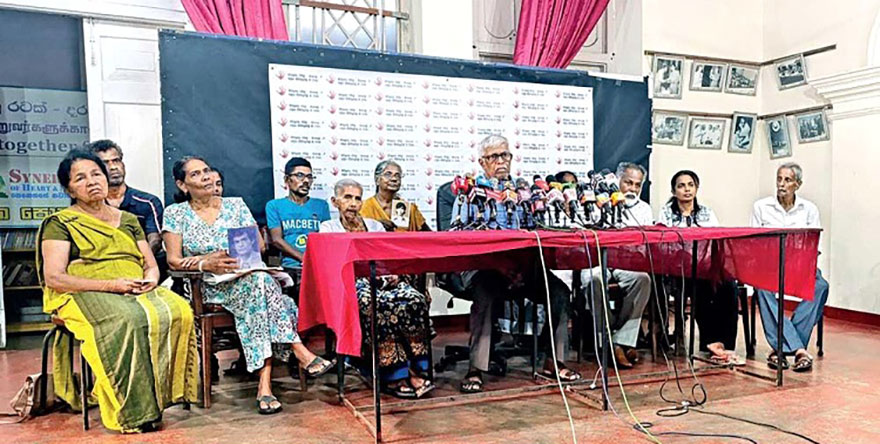
Few foresaw skeletons of Batalanda come crashing down in a London television interview. There have been plenty of speculations about the intended purposes and commentaries on the unintended outcomes of Ranil Wickremesinghe’s Al Jazeera interview. The more prurient takes on the interview have been about the public dressing down of the former president by the pugnacious interviewer Mehdi Hasan. Only one person seems convinced that Mr. Wickremesinghe had the better of the exchanges. That person is Ranil Wickremesinghe himself. That is also because he listens only to himself, and he keeps himself surrounded by sidekicks who only listen and serve. But there is more to the outcome of the interview than the ignominy that befell Ranil Wickremesinghe.
Political commentaries have alluded to hidden hands and agendas apparently looking to reset the allegations of war crimes and human rights violations so as to engage the new NPP government in ways that would differentiate it from its predecessors and facilitate a more positive and conclusive government response than there has been so far. Between the ‘end of the war’ in 2009, and the election of President Anura Kumara Dissanayake and the NPP government in 2024, there have been four presidents – Mahinda Rajapaksa, Maithripala Sirisena, Gotabaya Rajapaksa and Ranil Wickremesinghe – and as many governments. Of the four, Ranil Wickremesinghe is the least associated with the final stages of the war and its ending. In fact, he was most associated with a failed, even flawed peace process that ultimately ensured the resumption of the war with vengeance on both sides. RW was also the most receptive to war crimes investigations even proffering that external oversight would not be a violation of Sri Lanka’s Constitution.
One school of thought about the Al Jazeera interview is that those who arranged it were hoping for Ranil Wickremesinghe to reboot the now stalling war crimes project and bring pressure on the NPP government to show renewed commitment to it. From the looks of it, the arrangers gave no thought to Ranil Wickremesinghe’s twin vulnerabilities – on the old Batalanda skeletons and the more recent Easter Sunday bombings. If Easter Sunday was a case of criminal negligence, Batalanda is the site of criminal culpability. In the end, rather than rebooting the Geneva project, the interview resurrected the Batalanda crimes and its memories.
The aftermath commentaries have ranged between warning the NPP government that revisiting Batalanda might implicate the government for the JVP’s acts of violence at that time, on the one hand, and the futility of trying to hold anyone from the then government accountable for the torture atrocities that went on in Batalanda, including Ranil Wickremesinghe. What is missing and overlooked in all this is the cry of the victims of Batalanda and their surviving families who have been carrying the burden of their memories for 37 years, and carrying as well, for the last 25 years, the unfulfilled promises of the Commission that inquired into and reported on Batalanda.
The families impacted by Batalanda gave a moving illustration of the agony they have been going through for all these years in a recent media briefing, in Colombo, organized by the indefatigable human rights activist Brito Fernando. I am going by the extensive feature coverage of the media event and the background to Batalanda written by Kamanthi Wickremesinghe in the Daily Mirror (March 20, 2025). I am also borrowing her graphics for illustration – a photograph of the media briefing and a map of Sri Lanka showing the scattered sites of mass graves – 20 in all.
“We express gratitude to this government for providing the environment to discuss and debate about the contents of this report,” said Brito Fernando, speaking for the families. After addressing Ranil Wickremesinghe’s obfuscations about his involvement, and decrying Chandrika Kumaratunga’s failure to act on the recommendations of the report of the Batalanda Commission of Inquiry she created, Mr. Fernando appealed to the present NPP government to “provide a secure environment where these victims could come out and speak about their experiences,” Nothing more, nothing less, and that is all there is to it.
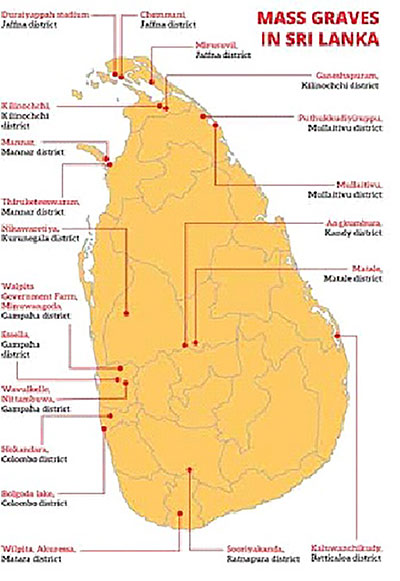 Whatever anyone else might say, the victims of Batalanda and their survivors have vindicated the NPP government’s decision to formally table the Batalanda Commission Report in parliament. As for their continuing expectations, Brito Fernando went on say, “We have some hopes regarding this government, but they should walk the talk.” Mr. Fernando suggested that the government should co-ordinate with the UNHRC’s Sri Lanka Accountability Project that has become a valuable resource for preserving evidence and documentation involving human rights crimes and violations over many decades. In addition, Mr. Fernando pointed out that the grieving families have not been involved in the ongoing excavations of mass graves, and they are anxious to receive the remains of their dear ones after their identity is confirmed through DNA analyses. Nor has there been any sign of legal action being taken against any of the suspects connected to the mass graves.
Whatever anyone else might say, the victims of Batalanda and their survivors have vindicated the NPP government’s decision to formally table the Batalanda Commission Report in parliament. As for their continuing expectations, Brito Fernando went on say, “We have some hopes regarding this government, but they should walk the talk.” Mr. Fernando suggested that the government should co-ordinate with the UNHRC’s Sri Lanka Accountability Project that has become a valuable resource for preserving evidence and documentation involving human rights crimes and violations over many decades. In addition, Mr. Fernando pointed out that the grieving families have not been involved in the ongoing excavations of mass graves, and they are anxious to receive the remains of their dear ones after their identity is confirmed through DNA analyses. Nor has there been any sign of legal action being taken against any of the suspects connected to the mass graves.
The map included here shows twenty identified mass graves spread among six of the country’s nine provinces. There could be more of them. They are a constant reminder of the ravages that the country suffered through over five decades. They are also a permanent source of pain to those whose missing family members became involuntary tenants in one or another mass grave. The families and communities around these mass graves deserve the same opportunity that the impacted families of Batalanda have been given by the current exposure of the Batalanda Commission Report.
The primary purpose of dealing with past atrocities and the mass graves that hold their victims is to give redress to survivors of victims, tend to their long lasting scars and reengage them as free and full members of the community. Excavation and Recovery, DNA Analysis and Community Engagement have become the three pillars of the recuperation process. Sri Lanka is among nearly a hundred countries that are haunted by mass graves. Many of them have far greater numbers of mass graves assembled over even longer periods. Suffering and memories are not quantitative; but unquantifiable and ineluctable emotions. The UN counts three buried victims as a mass grave. Even a single mass grave is one too many.
To do nothing about them is a moral and social copout at every level of society and in the organization of its state. Normalising the presence of mass graves is never an option for those who live around them and have their family members buried in them. Not for them who have built up over centuries, emotional systems of rituals for parting with their beloved ones. And it should not be so for governments that would otherwise go digging anywhere and everywhere in pseudo-archaeological pursuits.
Mass graves are created because of government actions and actions against governments. But governments come and go, and people in governments and political organizations change from time to time. There is a new government in town with a new generation of members in the Sri Lankan parliament, and it is time that this government revisited the country’s past and started providing even some redress to those who have suffered the most. The families of the Batalanda victims have vindicated the NPP government’s action to officially publicise the Batalanda Commission Report. The government must move on in that direction ignoring the carping of critics who selectively remember only the old JVP’s past.
There is more to what the government can do beyond mass graves. The Batalanda Commission Report is one of reportedly 36 such reports and each Commission has provided its fact findings and recommendations. Hardly any of them have been acted upon – not by the governments that appointed them and not by the governments that came after and created their own commissions. The JVP government must seriously consider creating a one last Commission, a Summary Commission, so to speak, to pull together all the findings and recommendations of previous commissions and identify steps and measures that could be integrated into ongoing initiatives and programs of the government.
The cynical alternative is to throw up one’s hands and do nothing, similar to cynically leaving the mass graves alone and doing nothing about them. The more sinister alternative was what Gotabaya Rajapaksa attempted when he appointed a new Commission of Inquiry to “assess the findings and recommendations” of previous commissions. That attempt was roundly condemned as a witch hunt against political opponents set up under the 1978 Commissions of Inquiry Act that was specifically enacted to enable the targeting political opponents under the guise of an inquiry. Repealing that act should be another consideration for the NPP government.
I am just floating the idea of a Summary Commission as a potential framework to bring positive closure to all the war crimes, emblematic crimes and human rights violations that have been plaguing Sri Lanka for the entire first quarter of this century. It is a political idea befitting the promises of a still new government, and one that would also be a positive fit for the government’s much touted Clean Sri Lanka initiative. For sure, it would be moral cleansing along with physical cleansing. A Summary Commission could also provide a productive forum for addressing the pathetic dysfunctions of the whole law and order system. The NPP government inherited a wholly broken down law and order system from its predecessors, but its critics suddenly see a national security crisis and it is all this government’s fault.
More substantively, a Summary Commission could tap into the resources of the UNHRC in collegial and collaborative ways without the hectoring and adversarial baggage of the past. These must be trying times for the UNHRC, as indeed for all UN agencies, given the full flight of Trumpism in America and its global spill over. Sri Lanka is one of a handful of countries where UNHRC professionals might find some headway for their mission. And the NPP government could be a far more reliable partner than any of its predecessors.
by Rajan Philips
Features
The Run-Up To The General Elections of July 1977
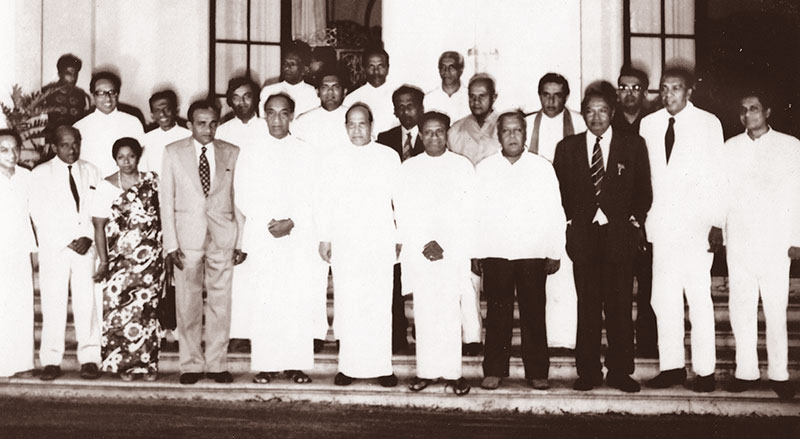
The General Elections were drawing near. There was concurrently a disturbing trend manifesting itself. A vociferous group were demanding that the elections be postponed for a further period, because the government was unable to complete its “progressive” social and economic programme, due to reasons beyond its control such as the insurgency of 1971. the oil price hike, the food crisis and so on. These arguments were patently absurd. The government had already extended its term of office by two years consequent to the introduction of the new constitution.
Now, a group of people were orchestrating a campaign for a further extension. At various public meetings where the Prime Minister attended, members of this group raised their voices and demanded a further extension of time. It appeared to take the form of a popular agitation exerting pressure on the government. No doubt, various persons holding similar views would have been speaking to the Prime Minister personally about the same issue. The whole thing seemed well orchestrated.
It was in this context that one day, she asked my opinion about the matter. I replied that I had always spoken absolutely frankly to her on any and all matters, and in the same spirit all I could say was that any attempt to extend the life of the government would be a total disaster, both for herself and the country. I went on to speak about her considerable achievements, as the world’s first woman Prime Minister; probably also as the first woman to be leader of the opposition in a parliamentary democracy, Head of the Non-Aligned Movement; honouredby the ILO, by their invitation to her, to deliver the keynote address at one of their inaugural sessions; honoured by the FAO by the award of the CERES medal in recognition of her personal and successful leadership of the food production drive consequent to the difficulties of 1974/75; honoured by the United Nations by their invitation to her to deliver the keynote address, at the first UN Conference on Women and Development and other achievements.
Then I told her that if elections were not held at the proper time, the position in the country could get unmanageable, and she would face the charge of destroying democracy in Sri Lanka. I had to be hard, because it was evident that many people had created for her, some kind of fantasy world, and she was getting confused. As was customary, she listened to what I had to say with grace and thanked me for being candid. Then she said, “l have asked WT also, and he said the same thing.”
That was the Prime Minister. She was always prepared to listen to different views, after which, she made up her mind. The dose of reality administered by WT Jayasinghe and myself, two public servants who had nothing to do with politics, would no doubt have helped her to take the final decision of holding elections.
Dealing with political personalities
Before I get to the election itself, I wish to refer to one or two other matters. One of the more important of these relates to some of the political personalities I had to work with, other than the Prime Minister. These included the Minister of Trade, Mr. TB Illangaratne; Mr. Hector Kobbekaduwa, Minister of Agriculture and Dr. Colvin R. de Silva, Minister of Plantation Industries, among others. My dealings with Mr. Maithripala Senanayake, I will refer to separately.
The fact was, that at some time or other one had to deal with practically all members of the Cabinet, since all of them had some business to transact with the Prime Minister’s Office at various times. Some of the ministers I have mentioned had more to do with us, both because of their seniority and the sensitive and important nature of their portfolios. My policy was equal attention and equal treatment for everyone. The internal politics between them did not concern me; neither did the state of relations between the parties in the coalition.
These were political issues that had to be resolved at other fora. I saw my job as attending fairly and diligently to any request or advice sought. There was a creative element in this, because, knowing the prime minister’s mind on many matters I was at times able to steer ministers and others away from courses of action which could have negative consequences. Therefore, many ministers dropped in to discuss some sensitive matter or sometimes to seek advice how best to handle a given situation with the prime minister.
They knew that they could repose trust in the confidentiality of such conversations. At the same time, when I thought that the prime minister had to be briefed on some developing situation, I always said openly that I would have to do so. In some circumstances, the relevant minister and I. only discussed a suitable approach. I did not view my duty to the prime minister as one entailing the carrying of tales or the retailing of gossip and rumours.
However, whenever relevant, gossip and rumours were checked out, because beneath them could lie some real problems. Occasionally, when something was beyond our competence to check, and if it looked important enough the prime minister was briefed. This approach begot a great deal of trust and confidence, so much so that on one occasion, Dr. Colvin R. de Silva told me that he as well as others in the LSSP were extremely sorry that I would not be available for appointment, when a vacancy occurred in the post of Secretary, in the Ministry of Communications, a ministry then held by Mr. Leslie Goonewardena, a senior LSSP minister. In his booming voice, he paid me the compliment of saying that they were not only looking for a secretary but also “a man.”
Besides dealing with ministers and government personalities, the secretary to the prime minister had also to deal with many opposition personalities. They received the same treatment as anybody else. If a request was valid, one worked to grant it. If in a particular instance, politics were proving to be an irrelevant and extraneous factor, one proceeded to remove it. Sometimes, this necessitated talking to the prime minister, and if she too were inclined to see only the politics, one analyzed the issue and pointed out that politics had no relevance to the issue, and that in her position she had to do the right thing. All this meant extra work and effort, but I considered it as part of a duty that had to be performed.
In this context, I was able at times to resolve genuine problems faced by opposition MP’s and personalities such as Mr. R. Premadasa, Mr. Gamini Dissanayake, Mr. Lalith Athulathmudali and others. My belief was that the prime minister’s office of a country should act fairly and justly on all matters referred to it subject to overall government policy. When the occasion so demanded, my endeavour was to point out that irrelevant or extraneous considerations could not be the foundation of good policy. They could be petty revengeful acts, harassment or abuse of power, but never policy, and it was my firm belief that those at the helm of affairs of a country should always distinguish between these.
All these meant an addition to an already nearly crippling workload. There were even times when one continued to work when one had fever, in order to meet impending deadlines. Indeed, there were a few occasions during the seven years I held this post, that when I eventually reached home in the night my temperature had risen to over 104°F.
(Excerpted from In Pursuit of Governance, autobiography of Dharmasiri Peiris, Secretary to the Prime Minister)
Features
My Life-Changing Training in Japan
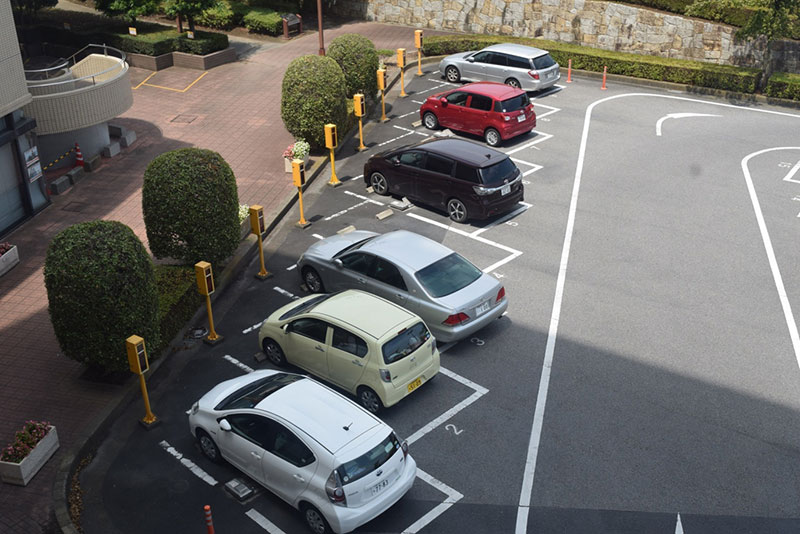
LESSONS FROM MY CAREER: SYNTHESISING MANAGEMENT THEORY WITH PRACTICE – PART 8
It was a selection by chance. I had barely completed my first year at the Ceylon Tyre Corporation when an opportunity arose to follow a three-month course in Japan. This course was for Industrial Engineers in Manufacturing organisations. As the Industrial Engineer at the Tyre Corporation it suited me well. I applied with much hope. But only to be informed that three years of service at the corporation is required to be entitled to a fellowship.
This was an internal rule at the corporation. My assistant applied and was selected, but some procedural delays prevented him from being selected for the final stage. The following year, he applied again, but something went wrong and he missed out again. I applied the following year because I had now completed three years. I was selected, and I ensured that there would be no slip-ups until the last step.
There seems to be some merit in the saying, “Your time must come.” It came for me, although I felt so sorry for my assistant, who missed it twice. The course was on “Industrial and Systems Engineering”. I was very glad to find that the other participant from Sri Lanka, was known to me at State Engineering Corporation. The course was organised by the Asian Productivity Organisation (APO) and implemented by the Association for Overseas Technical Scholarship (AOTS).
The APO was formed in 1961 as an intergovernmental organisation of Asian countries after it was noted that Asia’s productivity was very low compared to the West. Defining its role as a disseminator of productivity concepts and tools to play a catch-up game, the APO is very active and has been playing its role effectively.
Precise pre-departure preparation
The pre-departure documents were unbelievably precise. I had never come across such precision. This was a lesson even before departure. The documents included details such as what we must do just after baggage clearance on arrival at Narita airport. It included unique baggage tags, too. There was a map of the airport, a map of how we could find the limousine bus counter, and details of how much it would cost and how long the bus journey would take to the City Air Terminal (CAT) in downtown Tokyo.
Once we got to the CAT, we had to open another map which showed precisely where to find the taxi stand. Finally, there was another small slip we needed to give the taxi driver after getting into the taxi. It was all in Japanese, indicating our final destination, “Ajia Kaikan”, the Asia Centre Hotel. No words were needed. There were instructions about how to cash money at the airport and even suggesting the amount to be cashed. You can imagine how smooth the arrival was.
At check-in at the hotel, there was another packet including some preliminary instructions about the course, the weather forecast for the week, and a map showing the important places in the vicinity, such as restaurants, supermarkets, small grocery shops, coin laundries, post office, etc. All this made me resolve to do everything in the future with a similar high level of precision and demanded all my future subordinates to do the same.
Having arrived past midnight on a Saturday, my Sri Lankan colleague and I thought we would have a nap in the afternoon and then go for a walk in the vicinity. We were in deep slumber when the bed suddenly shook, and I felt dizzy. I jumped out and called my colleague, who had experienced a similar shaking. When we looked out of the window, everything seemed normal.
We went back to sleep and, going for a walk later, we found some pieces of ceiling plaster had come out, but everything looked normal. The streets were perfectly normal, and there were no signs of panic. Since Japan was famous for earthquakes, we just brushed it aside as probably a daily occurrence!
Responding to the earthquake
The next morning, we went to the lobby earlier than expected. That was to be the rendezvous for the APO officials to meet us. Reading the papers, we were shocked to find pictures of broken bridges, twisted highways, and major disruptions. There had, in fact, been an earthquake, but fortunately, it was far away from Tokyo.
The APO officials arrived and informed us that many resource persons arriving for the opening ceremony would not make it in time because of the disruptions, but they would use alternative routes and be present by afternoon. Therefore, the opening ceremony was rescheduled for the afternoon, and we began our lectures on the dot at 0900 am that day.
It was like giving us our first lesson: punctuality will be maintained whatever the disruption is. In contrast, I was involved in organising a seminar by Japanese experts at the Trans Asia Hotel in Colombo (now Cinnamon Lakeside), and even half an hour after the start time, only half the participants had arrived. The Japanese were uneasy and asked me what the delay was. I had to sheepishly say that it was raining outside, hence the delay in the arrival of participants.
In Japan, even an earthquake was not a reason to delay, but in Sri Lanka, light rain is an excuse for a delay. We must change this habit rather than repeating “Sri Lanka time, no?” I have done my part: five minutes after the start of a meeting, I would lock the room door. I was always able to start meetings on the dot.
The Asian group
Although our group of about 20 participants were from the APO member countries in Asia, our cultures differed. Those of us from the former British colonies such as India, Sri Lanka, Singapore and Hong Kong were always dressed in office attire, formal in behaviour and manners; the Philippines and the Thai participants were more casual, perhaps due to the American influence. The Indians were more boastful and were show-offs, while the others, even with superior knowledge, were more humble. Studying the behaviours of the participants was itself a good sociological study. Despite these differences, we gelled well and often went out in the evenings and weekends.
The culture shock
The most striking feature of Japan was its widespread cleanliness and the Japanese obsession with it. Any country can be clean, but the difference here is that everyone cleans. Every place, every road, and every toilet was spotless. Their slogan was “Everybody is a janitor”. We, too, were taught the basics in an introductory video on cleanliness. If you use any facility in common areas, you are expected to clean the place so that the next user will find it very clean.
I have watched with amazement how the cleaning staff cleans the common toilets in Japan. It was not just a superficial cleaning; they would squat on the floor near the toilet bowl and carry out a thorough cleaning. In the hotel restaurant, every chair and table legs were cleaned daily to remove the marks made by the shoes. The concept was “bring it back to the original condition”. It was fascinating to watch. Every telephone in our training facility and the hotel rooms smelt of disinfectant. Cleanliness and hygiene were a high priority.
The politeness was terrific. It was a concept of respecting the other person and making him comfortable. This “other person gets priority” concept meant that you would never pour a drink for yourself first; you first pour for the other person. It is an endless list stemming from their culture of “Omotenashi“; selfless service to the other person. I was told that this culture of selflessly serving others and the obsession with cleanliness came from a synthesis of Shintoism and Buddhism. The Shinto influenced Japan long before Buddhism pervaded many areas of the Japanese culture, including their respect for nature and their detestation of waste.
The alien registration
All foreigners are “aliens,” and although I was quite amused by the term, we had no alternative but to register at the Alien Registration Office. I suppose it was to ensure that all long—and medium-stay foreigners were properly documented. It became necessary when we opened bank accounts, too.
The technology shock
Everything in Japan ran on advanced technology. Even the hotel bathrooms were high-tech. You had to figure out how to buy train tickets in an unmanned subway station. There were microcomputers for every two students during the course, and all the lectures, exercises and demonstrations were on these. The two of us from Sri Lanka had never seen such small computers before, let alone known how to use them.
The first exercise was one of three assignments: prepare a programme to rank a given set of marks, improve the execution time of a given programme, and make a beautiful design on the computer. Most students from South Asian countries and India were familiar with these microcomputers, but we were clueless. We decided to design the Singapore Airlines logo by programming line by line. That was all we could do. It worked, and we won competition number three, much to the chagrin of the Indian counterparts who challenged that it was not an original design. The challenge was overruled. Very soon, we were able to use these computers successfully.
A week after the course started, my Sri Lankan colleague and I were comparing Japan and Sri Lanka, wondering how long it would take to catch up with Japan of 1980. Perhaps 25 years, said my colleague. It is 45 years now, and we are nowhere near.
The next episode will continue with lessons in Japan.
by Sunil. G. Wijesinha
-
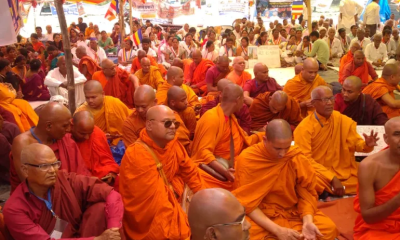
 Foreign News6 days ago
Foreign News6 days agoBuddhism’s holiest site erupts in protests over Hindu ‘control’ of shrine
-

 Features4 days ago
Features4 days agoCelebrating 25 Years of Excellence: The Silver Jubilee of SLIIT – PART I
-

 Editorial6 days ago
Editorial6 days agoWhen tractors become cars!
-

 Business2 days ago
Business2 days agoAIA Higher Education Scholarships Programme celebrating 30-year journey
-

 Business4 days ago
Business4 days agoCEB calls for proposals to develop two 50MW wind farm facilities in Mullikulam
-

 Features4 days ago
Features4 days agoNotes from AKD’s Textbook
-
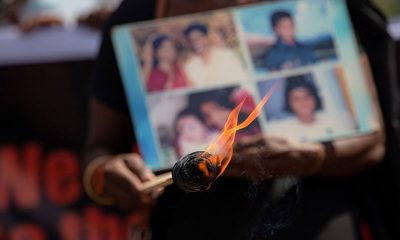
 Features6 days ago
Features6 days agoPolitics of Enforced Disappearances in Sri Lanka
-

 News1 day ago
News1 day agoGnanasara Thera urged to reveal masterminds behind Easter Sunday terror attacks


